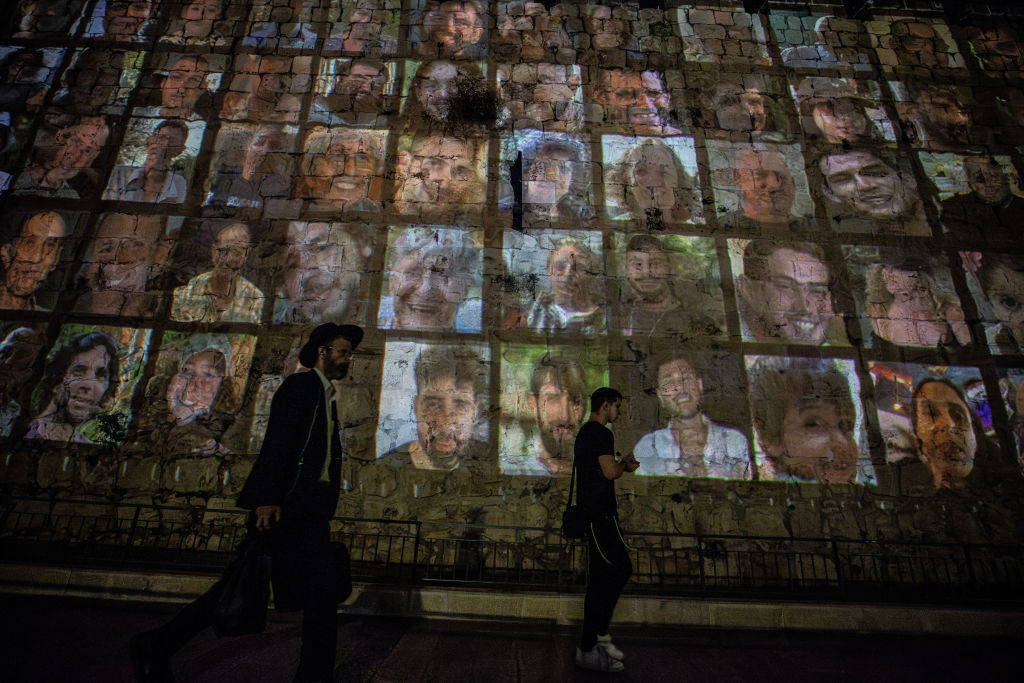
During the Oct. 7 terrorist attack in which more than 1,400 people in Israel died, Hamas also captured approximately 200 hostages, at least 20 of them children. Scenes from that day have shocked the world. Reports have circulated of captives paraded through the streets of Gaza. Video suggests that some who were captured have been killed. Others are being held in sensitive locations for strategic leverage. Hamas has produced video of medical care to ostensibly demonstrate humane treatment, as well as video of hostages demanding a prisoner exchange. Israel has denounced these tactics as propaganda. Meanwhile, Hamas has also vowed to broadcast hostage executions on social media in response to Israeli strikes.
The question of how the hostages are being treated is of course a top priority for their anxious loved ones and much of the world. One of the few hostages who has been released, whose husband is reported to still be held by Hamas, spoke of a terrifying ordeal on Oct. 7 but, perhaps judiciously, said she personally was treated relatively well during her captivity. Israeli Defense Forces successfully rescued one hostage on Oct. 30. Few other details are available so far, but history suggests that when captives become pawns, this not only complicates successfully ending a conflict but also correlates to an exploitative government that undermines its own promises of independence and freedom.
A recent parallel occurred during the Vietnam War when 766 Americans are known to have been imprisoned by communist forces; 114 died in captivity. On average, they spent five years imprisoned; the longest prisoner was held for almost nine years. Unlike the current situation in Gaza, in North Vietnam the vast majority were military officers and not civilians. Since the United States never made an official declaration of war against North Vietnam, the communist forces claimed that the American prisoners were “war criminals” fighting on behalf of an illegitimate government in South Vietnam. Thus, the rules of engagement the U.S. expected did not apply.
Read More: How the Israel-Gaza Hostage Crisis Could Play Out
And so, prisoners of war became proud displays of revolution. In the 1966 Hanoi March, the North Vietnamese paraded 52 Americans in chains for two miles through the streets of its capital city in the face of a jeering, violent crowd. These actions served to rouse the locals against their enemy and to send a message to the international community that Hanoi intended to prosecute its prisoners in a public war crimes trial.
North Vietnam also engaged in inhumane treatment of their victims, beating prisoners, torturing them with ropes, and performing surgeries without anesthesia. They withheld food, locked the prisoners in leg irons, and placed them in solitary confinement in dreadful conditions. Such punishing tactics were used to obtain military information, coerce propaganda statements and videos, and discipline the prisoners.
Read More: My Father's Vietnam
Notably, the International Red Cross was never granted access to inspect their cells or evaluate prisoner conditions. North Vietnam never provided a complete and full list of its prisoners, and did not allow the regular exchange of mail.
The North Vietnamese also used the tactic of “early releases” for propaganda purposes. The government incrementally released a total of 12 Americans before the end of the war. Although the communists characterized the repatriations as evidence of humane treatment, only groups that condemned U.S. war policy and embraced the communist government gained permission to retrieve the prisoners and accompany them home—a tactic meant to raise the legitimacy of the radical wing of the anti-war movement.
In the book Until the Last Man Comes Home, Michael Allen notes that the Justice Department was forced to lift travel restrictions for Dave Dellinger and Rennie Davis, both of whom had been indicted for their part in anti-war demonstrations at the Democratic National Convention, when the North Vietnamese refused to release the prisoners to anyone but these specific activists.
Such releases showed how the North Vietnamese attempted to use prisoners of war to heighten domestic political divides within the United States. Not all Americans had sympathy for the prisoners of war. Leftist anti-war protesters in the U.S. repeated North Vietnam’s “war criminals” verbiage. In some cases, the protesters carried the flag of their captors. Jane Fonda infamously characterized prisoners who reported torture and mistreatment as “hypocrites and liars,” given collateral damage simultaneously being inflicted from American bombing campaigns. Several anti-war groups toured Hanoi’s prisons and described their spacious cells, abundant meals, and clean clothes in glowing terms, not realizing they were seeing only the “show camps” or that the prisoners cooperated only under the threat of torture. (In Women Strike for Peace, Amy Swerdlow discusses their naivety.)

Families of the prisoners looked on with helplessness and horror, just as the families of those kidnapped by Hamas are doing now. As the Vietnam War continued, a National League of Families of American Prisoners and Missing in Southeast Asia pressured North Vietnam to improve prison conditions with publicity campaigns that personalized the prisoners' stories and lobbied the government to ensure that prisoner release played a key role in peace negotiations.
However, North Vietnam used the prisoners as a negotiating tactic, demanding that the United States not only withdrew militarily but give the South Vietnamese government over to the communists before guaranteeing their release. Pressure mounted on President Richard Nixon's Administration to alter its military and political objectives in the name of the prisoners, while Nixon insisted on prisoner release as a precondition for American withdrawal. Such negotiations dragged on for almost four years. In the current war in the Mideast, Hamas is thought to have taken the hostages in part to deter an invasion, while Israel has refused a ceasefire until Hamas frees the hostages.
Just as Hamas has been accused of using civilians in Gaza as human shields, so was North Vietnam, and such tactics reflected a callousness for human life that extended to the governing of its own people once the military conflict finally subsided. After the Fall of Saigon and reunification under communist rule, a police state followed. Over a million Vietnamese people suffered in re-education camps where at least 165,000 perished. Government seizure of business resulted in economic collapse. Curfews became the law of the land, and anything deemed subversive, including cameras and compasses, were restricted. A refugee crisis ensued, and Vietnam warred with its neighbors Cambodia and China.
Read more: The Families of Israelis Held Hostage by Hamas Speak Out
When regimes like Hamas use captives as pawns, it is more than an attempt to terrorize the victims and their fellow citizens. It is also an effort to frustrate Israel's attack on Hamas leaders, as well as to generate state-approved messaging. The world should not be fooled by Hamas's propaganda any more than North Vietnam's. Using captives in such a manner violates the Geneva Conventions and reveals an indifference toward noncombatants that also characterizes Hamas's approach to the very people—Palestinians—to whom it promises freedom. Hamas has already been governing Gaza with an authoritarian hand for 16 years.
American prisoners like John McCain and Paul Galanti, held in Hanoi for almost seven years, knew they would either die in captivity or be released, and felt great sympathy for those who would continue to live under North Vietnam's brutal communist rule at war's end. When the Hamas hostages' captivity ends, the world must not forget their ordeal, and neither should Palestinians. Gaza's future is uncertain, but the past and present both confirm that the world—and that includes the enclaves' residents, perhaps most of all—should be glad when the rule of a hostage-taking regime comes to an end.
Emilie Raymond is a professor of history at Virginia Commonwealth University. Author of Stars for Freedom: Hollywood, Black Celebrities and the Civil Rights Movement, she is currently writing a biography of Paul Galanti, an American prisoner in Vietnam, and his wife Phyllis, who lobbied on his behalf. Made by History takes readers beyond the headlines with articles written and edited by professional historians. Learn more about Made by History at TIME here.
More Must-Reads From TIME
- The 100 Most Influential People of 2024
- Coco Gauff Is Playing for Herself Now
- Scenes From Pro-Palestinian Encampments Across U.S. Universities
- 6 Compliments That Land Every Time
- If You're Dating Right Now , You're Brave: Column
- The AI That Could Heal a Divided Internet
- Fallout Is a Brilliant Model for the Future of Video Game Adaptations
- Want Weekly Recs on What to Watch, Read, and More? Sign Up for Worth Your Time
Write to Emilie Raymond / Made by History at madebyhistory@time.com
